Strong light and brilliant. Suck it mono!
Ok, fair's fair. The mono reply is strong also I guess.
Strong light and brilliant. Suck it mono!

Ok, fair's fair. The mono reply is strong also I guess.

Here are a couple of images that I like, but have had trouble deciding on processing for. Black and white or colour? Both work both ways. This is one of those exercises that helps decide me on being a colour only shooter. The lure and mystery of colour always draws me even when I feel a mono image is the obvious, stronger and easier path.
I did a rare wedding the other week. The sort you wish they were all like, small, friendly, genuinely loving and stressless. The images came effortlessly as they do when you are gifted with wonderful subject matter, but even then the mono/colour question cropped up time and again. I really liked the mono images and some really sang when the colour ones struggled in soft, green shade under an old tree, but colour called me first. Shame really as the Pen F in particular does mono as well as any digital camera I have used.

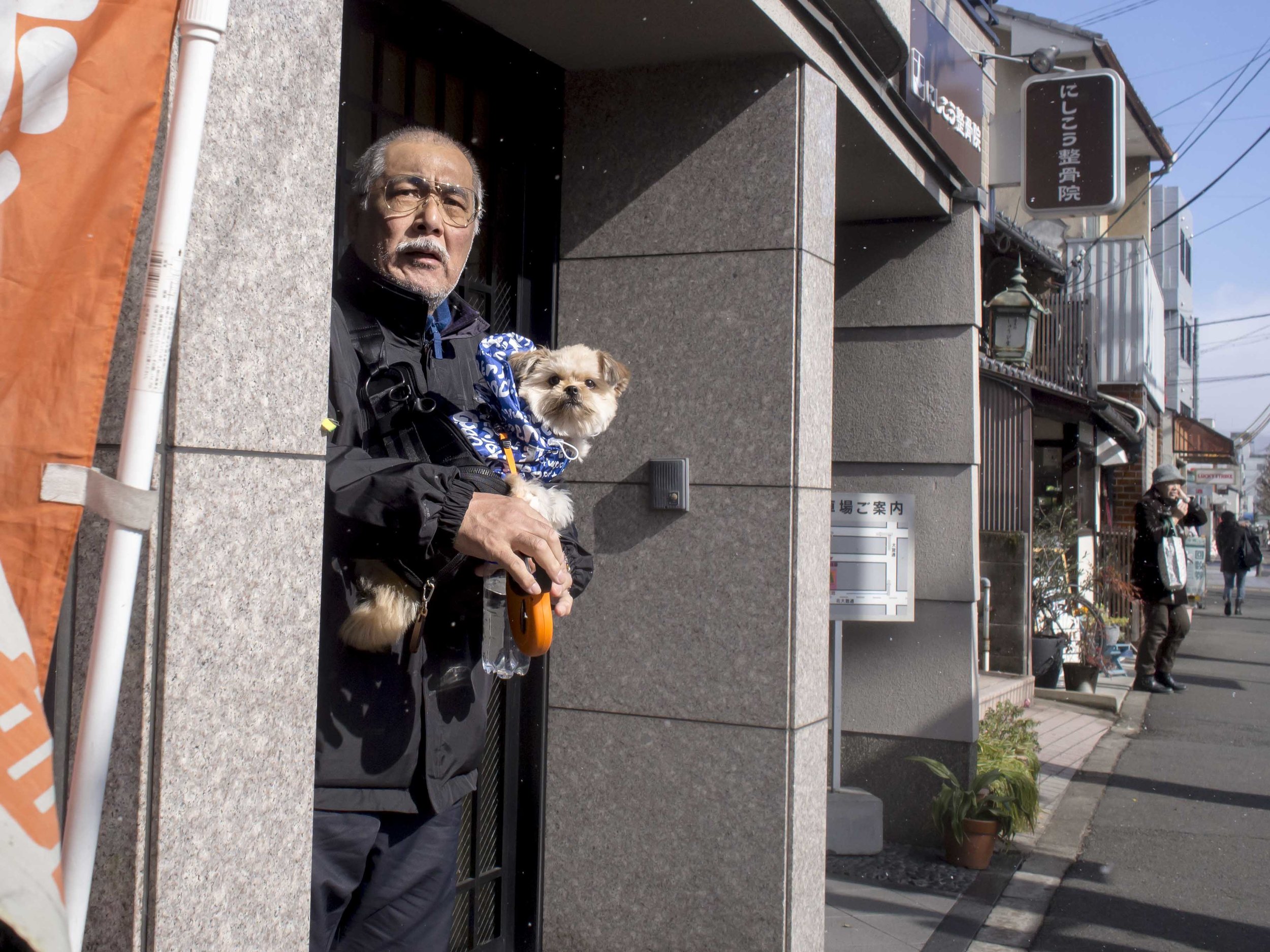
Tighter cropping due to the over abundance of orange and white in that corner. Not offensive in the mono image.


More "open" and gentle than the colour image, but I cannot deny that the yellow of the helmet was the draw for the image in the first place.
Lots of fun for us, but an un welcome reality for the locals. Snow and especially ice, can just make things hard, but the Japanese tackle it with their usual stoic good cheer.











Nothing to say about this. I just like it.

When travelling in Japan, most people use trains at some point. For me they are the beginning and the end, and sometimes the middle of a shooting day, offering a perfect mix of people, light, colour and movement.
Kyoto has some of my favourite stations, so far at least. They cover the small, quaint and slightly shabby to magnificent state of the art. Either way, they are part of life in Japan and it shows.



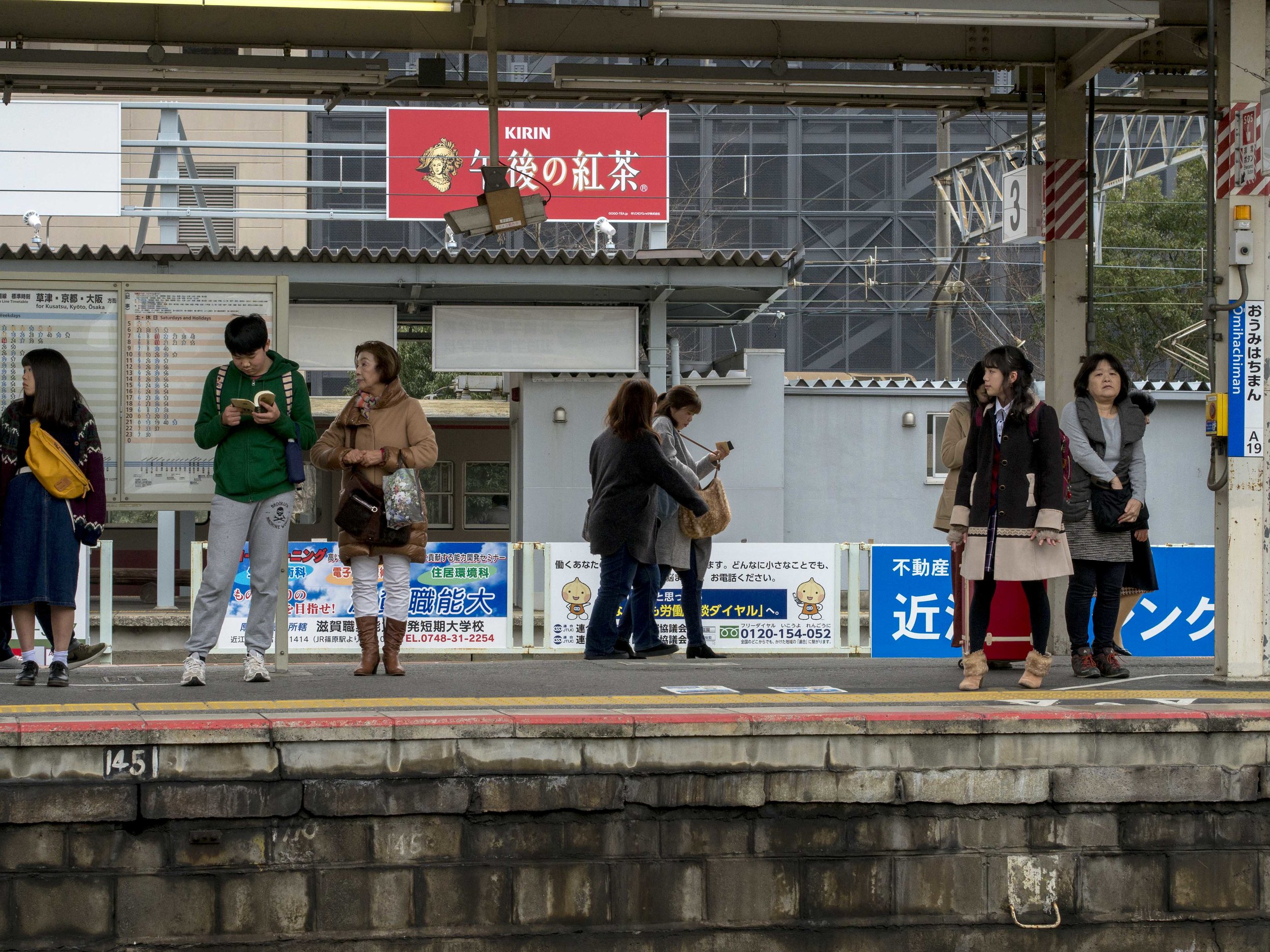








A benefit that can never be under estimated about "Live view" cameras (mirrorless or the odd mirrored camera that can function well this way), is removing the guess work of exposure compensation.
The image below was taken late evening in that period where you start to mistrust your own eyes, but before full darkness. For an SLR shooter, even with a state of the art light meter, getting the exposure somewhere between "as seen" and "as wanted" is tricky, requiring lots of experience. Imagine doing this in the film era!
With a "What You See Is What You Get" camera, it is simply a matter of setting for taste based on what you see.
The most important setting control on my EM5's is the exposure compensation control that I have switched to the back thumb dial. The Pen, to it's credit does not seem to need as much adjustment, which is good as the control is far too stiff and frustratingly cannot be moved.

EM5 45mm at F2
Oddly, when I use an SLR camera, I am now keener to use exposure compensation, as I know the benefit. Getting used to setting it though without seeing the effect is unsettling and to my mind pointless in this day and age. Ansel Adams would have used any tool at his disposal, even digital, so why shouldn't we.
Incidentally, this is also an area the EM5 shines, both technically and artistically.
It's always a challenge to go somewhere many have gone, even yourself on several occasions, and "see" something different, just or differently.

Winter can provide different light, especially when leaf cover diminishes.

Fresh paint helps also.
On our visit to Chinatown in Kobe, we were unintentionally escorted by a group of high school kids.
It seemed that everywhere we wanted to go, they went to, so for about an hour we ambled in loose ensemble, all engaged in our own things. The longer we were around them, the more infectious their sense of comradeship and fun became.

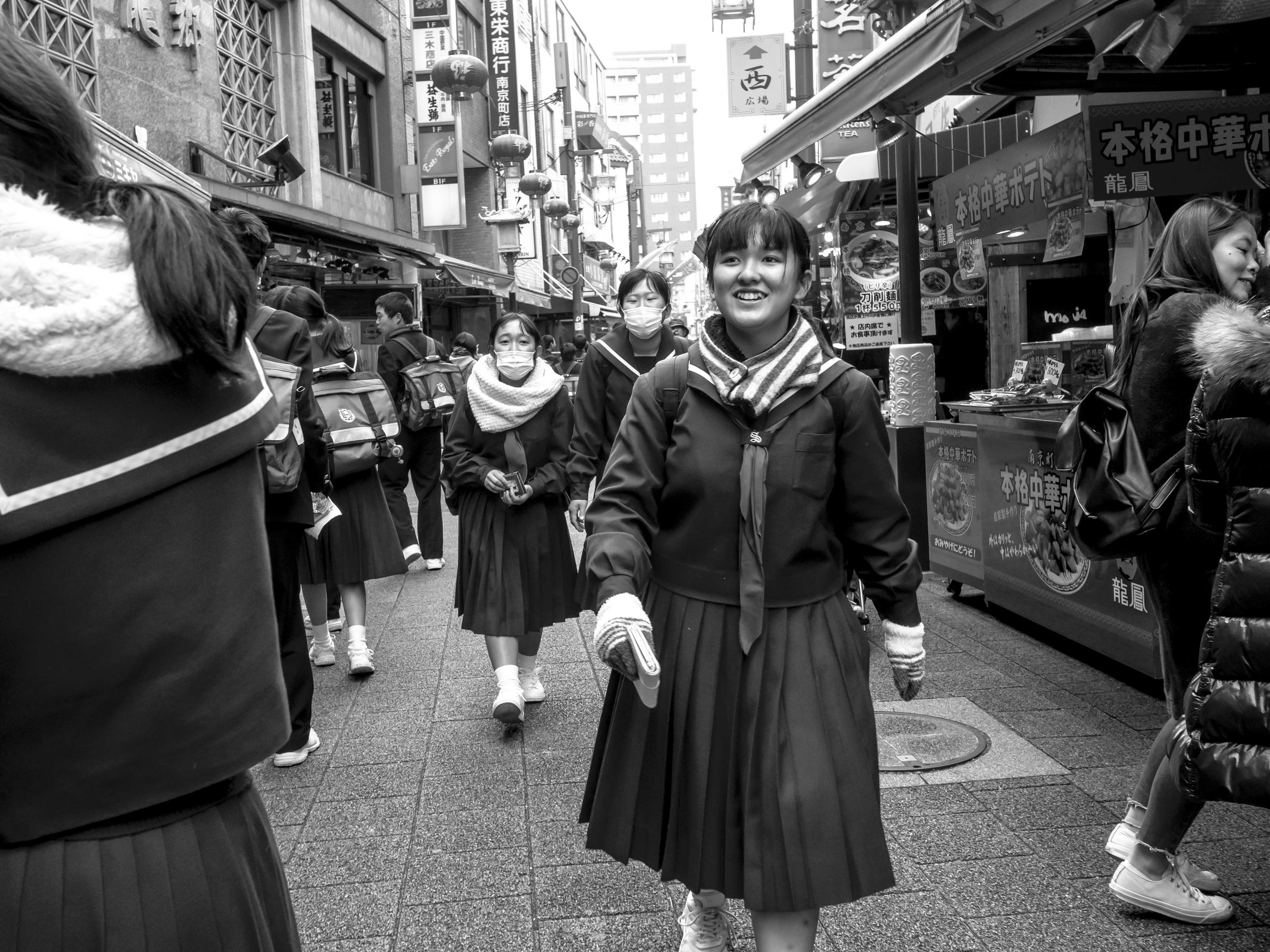







Passing a small real estate office near our hotel, my wife and I noticed an owl (real) sitting on the back of a chair. Possibly there to catch mice after dark or simply as a companion for the owner.
A brief moment of clarity, prompted me to enquire whether they would charge by commission, Owl-ey, or maybe higher perches?
My wife just quietly walked away.

Smoking in Japan is often limited to specific smoking areas. These give the like minded people a chance to catch up and socialise. Even if there is not enough room.

EM5 17mm
One of my early photographic inspirations came from the work of Keith Lazelle. He would walk the entire length of the Appalachian trail, armed with 35mm Olympus cameras and a variety of lenses, aiming for fine art level images that he would then sell in the "down" months.
Some of his images, discovered by me first in Camera and Darkroom magazine (sometime in the '90's), have stayed with me since. His use of deep and mysterious light, contrast and abstraction drawn from Fuji Velvia slides and printed on Ciba(Ilfra)chrome paper were (are) magnificent and a testament to his photographic eye and the care he took translating his vision.
I cannot claim to match him, but with him in mind often, I am drawn to images like the one below.

The Philosopher's trail Kyoto. EM5 25mm lens
A few more images of China town in Kobe.



The same crossing as before, next change of lights.


More examples of light in Kobe. The day went from sunny and mild to cold, sleeting and windy. Lousy weather tends to make for brilliant light as a rule and that was the case here.





All images, EM5 and 17mm except the middle one taken with the 45mm
Kobe is an interesting city of contrasts. The day trip we made showed us three disparate "feels". We started west of the station in an area that looked like it was all about the promise of an interesting night life, then we went up the surrounding hills to find colonial trading houses and faux European street scenes and then down to the city proper, where magnificent tall and regal office buildings and top end shopping contrasted strongly with China Town and dock lands.
Once the gateway for foreign trades and renown for Kobe Beef, the city still plays an important role today.
For me, it offered great light, interesting people and that mix of un self conscious small town and proud, vibrant city that tends to produce interesting images.
Below, I felt that I had a balanced image first up. The light was interesting and the main subject (I feel it is the slightly classic looking man) had plenty of support.

The second image, giving you an indication of how often I push the button when walking and framing, is more pointed. It takes away much of the street feeling and becomes more about the man and the crowd opposite, almost a "me against the tide of them" statement.

The third image exaggerates the feelings from the image above, making the man the secondary, framing element to the man on the left across the road. Light becomes the framing factor here, not compositional, subject balance.

My favourite is the middle one at the moment, but these things change.
All images EM5 with the 17mm
Just really like the "Adams" feel of this one.
EM5 files do have the ability to look film like, especially in the often difficult (for digital) highlights.
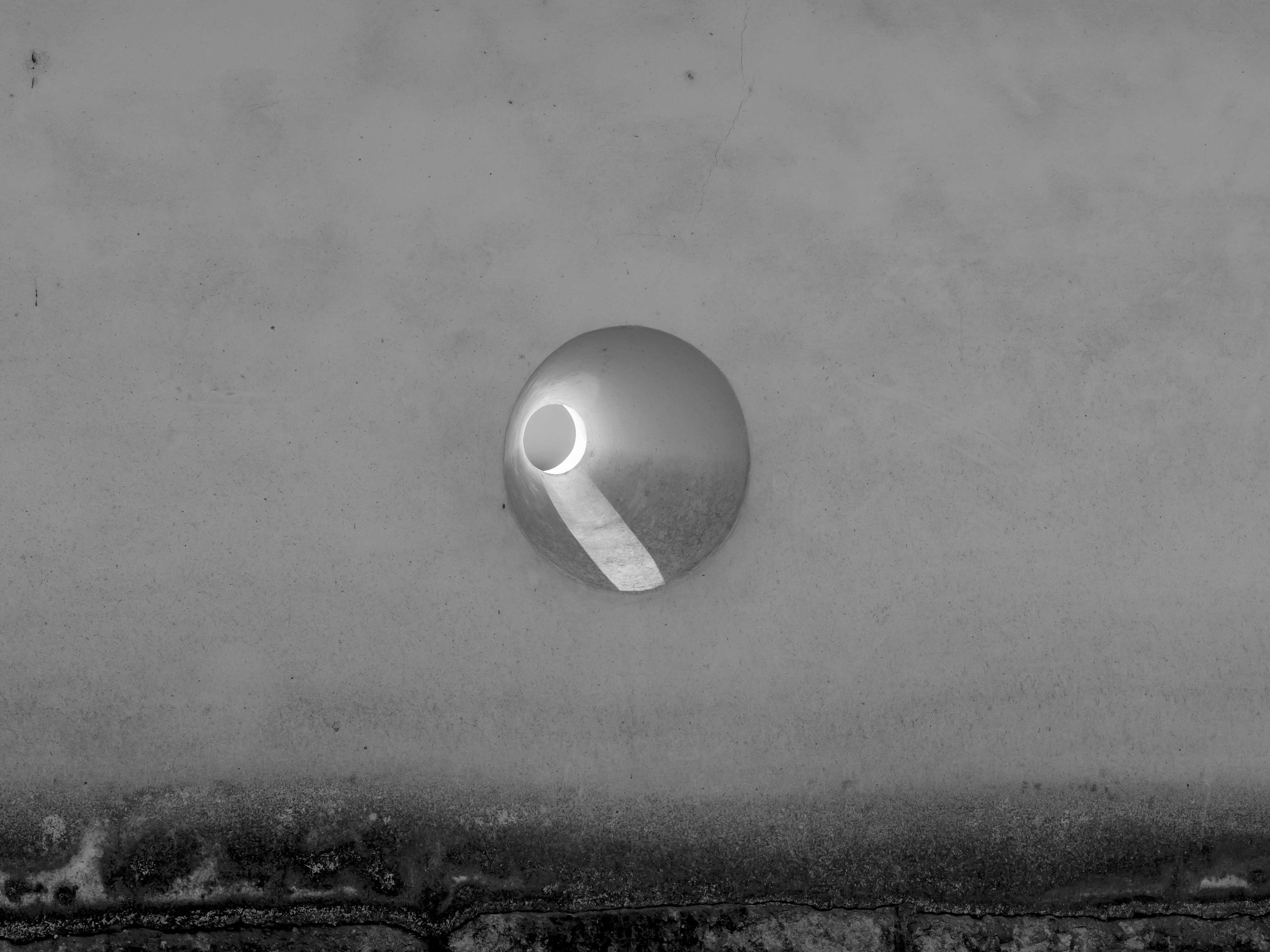
EM5 45mm
My usual work process is to import my images with a pre set called "gentle". This gives me a small boost in whites with a corresponding drop off in blacks, reduced highlights and slightly boosted shadows. This image was imported "as shot" in Olympus RAW and very gently pushed.
Sometimes I think I (we) need to reset. The Japanese have a saying that goes something like "If you are at a dead end, go back and start again with a "learning mind"".
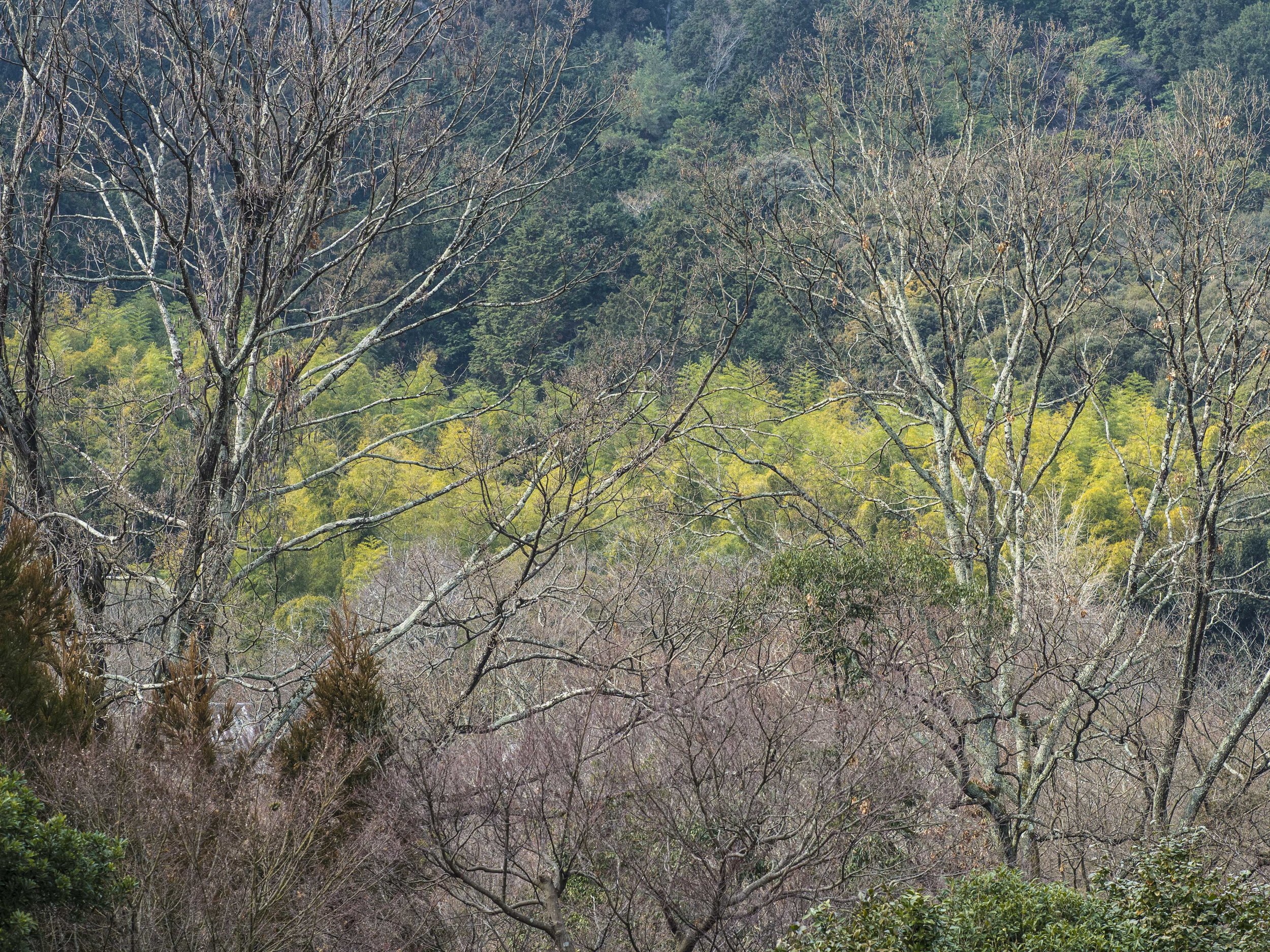
EM5 75mm
I love the Japanese work ethic. Worth doing, worth doing well, worth having fun.

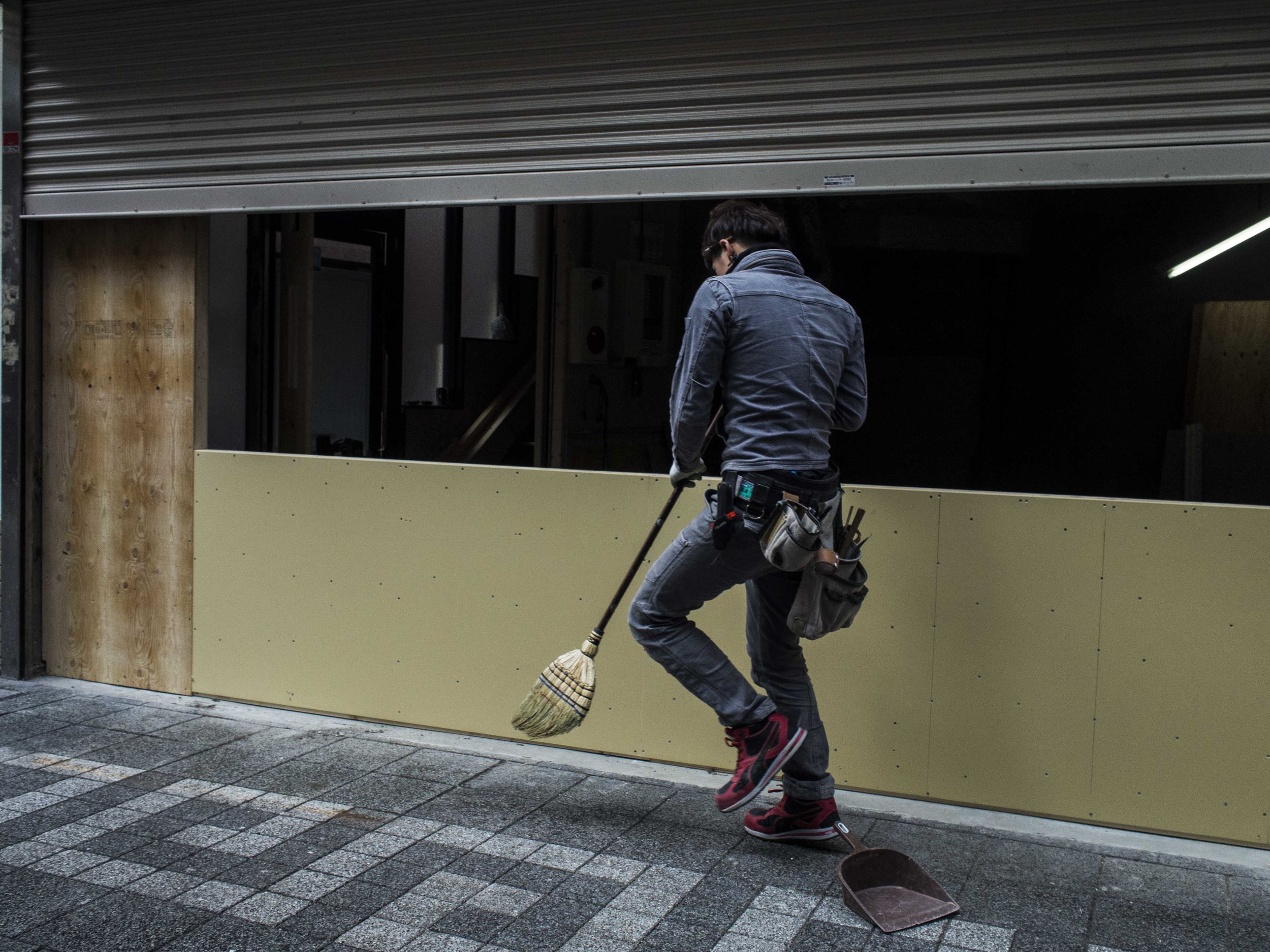
Seconds apart, showing a world of expressive difference.


EM5 45mm